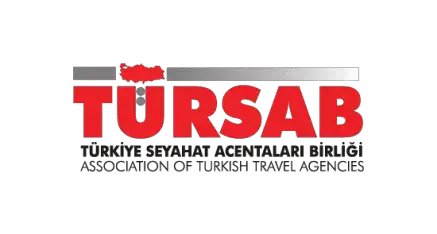Do Hair Transplants Hurt? What to Expect During the Procedure
When considering a hair transplant, one of the first questions people ask is: “Do hair transplants hurt?” Understanding what to expect can help ease any concerns and prepare you for the procedure.
This guide covers everything you need to know, especially if you’re considering hair transplant Turkey clinics, which are renowned for their quality and affordability.
Table of Contents
What Happens During a Hair Transplant Procedure?
A hair transplant typically involves removing hair follicles from a donor area (usually the back of the head) and implanting them in areas where hair is thinning or has receded. In Turkey, leading clinics often use advanced techniques like FUE (Follicular Unit Extraction) or DHI (Direct Hair Implantation).
Both methods are minimally invasive and performed under local anesthesia, which numbs the scalp. This ensures that the procedure itself is as comfortable as possible.
Does the Injection for Local Anesthesia Hurt?
The only part of the procedure where you may feel discomfort is during the application of local anesthesia. Most patients describe it as a mild pinching sensation or a slight burning feeling that lasts a few seconds.
Turkish clinics are known for their patient-focused care, often using advanced numbing techniques to make this step as pain-free as possible. Once the anesthesia takes effect, you won’t feel pain during the transplant process.
Clinics in Turkey use advanced tools and techniques to make this process as pain-free as possible.
| Procedure Stage | Pain Level (1–10) | Description |
|---|---|---|
| Injection of Anesthesia | 2–3 | Brief discomfort akin to a pinch or sting. |
| During Transplant | 0–1 | No pain due to effective numbing. |
| Post-Procedure | 2–4 | Mild soreness or tightness, easily managed. |

Hi! I’m Alona, your expert in beauty and long-lasting vitality, especially when it pertains to hair health.
Feel free to connect with one of IdealofMeD’s specialists today! Don’t hesitate to reach out if you have any questions regarding our vitamins. We’re here to support on your journey to healthier, more vibrant hair!
- we are online
What Does the Procedure Feel Like After Anesthesia?
Once the scalp is numbed, the procedure is virtually painless. You might feel mild pressure or a pulling sensation when hair follicles are extracted or implanted, but it’s not painful.
The sensations you may experience include:
- Pressure: While follicles are being extracted or implanted.
- Tugging or Pulling: During the placement of grafts, especially with FUE.
- Buzzing or Vibration: From surgical instruments.
Here’s what you can expect during different parts of the procedure:
- Extraction Phase: A slight pulling or tugging as hair follicles are removed. This is often described as feeling like a gentle pinch.
- Implantation Phase: A similar pulling or tapping sensation as the grafts are placed in the recipient area. It’s entirely painless due to the numbing effect.
- Duration: The procedure can last several hours, depending on the number of grafts, but the experience is made comfortable with frequent breaks and support from the clinic staff.
To ensure the experience is as relaxing as possible, many Turkish clinics go above and beyond:
- Offer entertainment options like movies, music, or even podcasts.
- Provide ergonomic chairs or beds for comfort during the procedure.
- Allow snacks and refreshments during breaks to keep you comfortable.
Will I Feel Pain After the Procedure?
After the anesthesia wears off, some mild discomfort or tightness in the scalp is normal. Most patients compare it to the feeling of a sunburn. Swelling around the forehead or eyes may occur but usually subsides within a few days.
Over-the-counter painkillers, such as ibuprofen, are often sufficient to manage any post-procedure discomfort. Your doctor will provide detailed aftercare instructions to ensure a smooth recovery.
How Long Does Discomfort Last?
Most patients report feeling completely back to normal within a week. The initial tenderness or tightness typically resolves in 2–3 days. Clinics in Turkey often offer follow-up consultations to monitor your progress and address any concerns.
Timeline of Discomfort and Recovery
Here’s a detailed timeline of what you can expect in terms of discomfort and recovery:
| Day | Experience | Pain Level | Action Required |
|---|---|---|---|
| Day 0 | Procedure day. Anesthesia is applied; transplant performed. | 2–3 | Rest and avoid touching the scalp. |
| Day 1 | Mild soreness and tightness. Swelling may begin. | 2–4 | Use prescribed medications; avoid strenuous activities. |
| Day 2–3 | Swelling peaks; some redness and itching. | 2–3 | Follow aftercare instructions; avoid scratching. |
| Day 4–7 | Scabs form around transplanted follicles and begin to fall off naturally. | 1–2 | Start gentle scalp washing as instructed. |
| Week 2 | Transplanted hair may shed (shock loss). | 0 | No specific action required; this is a normal part of healing. |
| Months 3–6 | New hair growth begins. | 0 | Maintain a healthy scalp routine. |
Why Choose Turkey for Hair Transplants?
Cost Comparison
| Country | Average Cost (USD) | Package Inclusions |
|---|---|---|
| Turkey | $2,000–$4,000 | Procedure, accommodation, transport. |
| USA/UK | $8,000–$15,000 | Procedure only. |
What Are the Risks of Hair Transplants?
| Side Effect | Description | Duration |
|---|---|---|
| Swelling | Around the forehead or eyes. | 2–3 days. |
| Redness | On donor and recipient areas. | 1–2 weeks. |
| Itching | Due to healing and scab formation. | 1 week. |
| Shock Loss | Temporary shedding of transplanted hair. | 2–4 weeks. |
How to Prepare for a Hair Transplant
Proper preparation can minimize discomfort and ensure the best results:
- Avoid Blood Thinners: Refrain from aspirin or similar medications for at least a week before the procedure.
- Quit Smoking: Smoking can slow down the healing process.
- Follow Instructions: Your clinic will provide specific guidelines on what to eat or drink before the procedure.
What Should I Expect During Recovery?
Here’s what to expect in the days following your procedure:
- Day 1–3: Mild swelling and redness are normal. Avoid touching or washing your scalp.
- Day 4–7: Scabs may form around the transplanted follicles. These will naturally fall off.
- Week 2: Hair shedding may occur. This is a natural part of the process called “shock loss.”
- Months 3–6: New hair growth begins to appear.
By six months, most patients see noticeable improvements, with full results visible after a year.
How Do Clinics in Turkey Ensure a Comfortable Experience?
Turkish clinics prioritize patient comfort and satisfaction. From pre-procedure consultations to personalized aftercare, they take steps to ensure the process is as smooth and painless as possible. Modern facilities, experienced surgeons, and attentive staff make Turkey a trusted destination for hair transplants.
How Does the Cost of Hair Transplants in Turkey Compare?
One of the key reasons people choose Turkey is the affordability. Despite lower costs, the quality of care remains exceptional. Packages often include not just the procedure but also accommodations and transportation, making the overall experience stress-free.
Are There Alternatives to Hair Transplants?
If you’re hesitant about surgery, there are non-surgical options like PRP (Platelet-Rich Plasma) therapy or medications such as Minoxidil and Finasteride. However, these methods don’t offer permanent results like a hair transplant does.
For those wondering, “Do hair transplants hurt compared to other treatments in Turkey?”, the answer is that the discomfort is minimal, and the results are more reliable.
Sources & expertise
We have used the following sources to compile this page:
Information checked by an expert

Alona Arel
The information on this page is checked by Alona Arel. She’s an expert on beauty and longevity and often asked to share her knowledge. For example for Healthline and Lifehacker.
Awards & accreditations



IdealofMeD Hair Transplant
We’re you’re number 1 destination for a hair transplant in Turkey. We have a holistic approach when working with hair loss and longevity, and we have developed our own products. You can find them in the IdealofMeD Shop.
